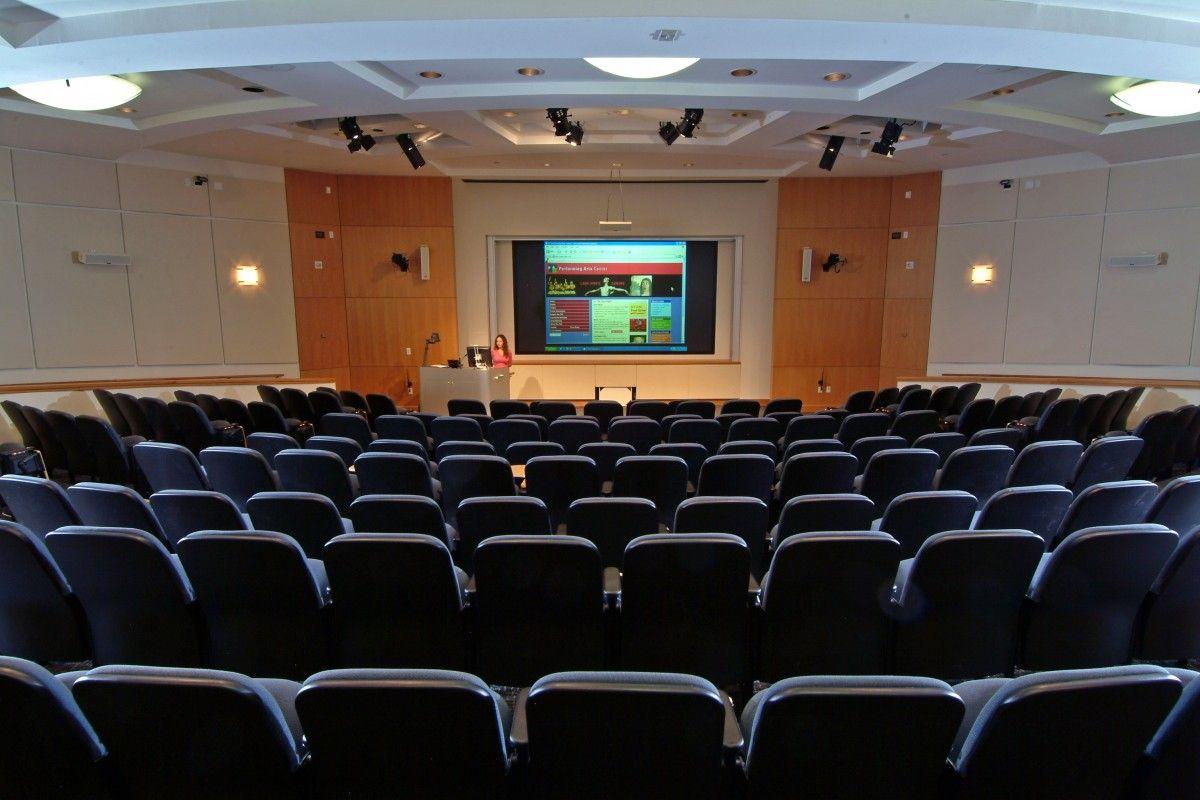In a world where audiences crave personalized experiences, the ability to customize workshops, events, and presentations is more crucial than ever. This article delves into effective techniques for tailoring content to specific audiences, ensuring that every presentation resonates deeply and creates a lasting impact. By understanding your audience, designing a structured presentation, developing it collaboratively, executing with finesse, and optimizing content delivery, you can craft experiences that are not only informative but also highly engaging and memorable.
Key Takeaways
- Understand your audience's demographics and preferences to segment them and tailor your content effectively, ensuring relevance and engagement.
- Use storytelling and emotional engagement in your presentation structure, while maintaining consistency with templates from experts like IDEO.
- Develop presentations collaboratively, leveraging team creativity and incorporating feedback to refine and optimize your message.
- Execute your presentation with a strong opening, maintain engagement with dynamic content, and close with a compelling call to action.
- Continuously customize and adjust your content delivery based on client-specific needs and real-time audience feedback to maximize impact.
Understanding Your Audience

Segmenting Participants for Tailored Content
To create a workshop that resonates with every attendee, segmenting your participants is crucial. By categorizing them based on specific characteristics, you can tailor your content to address their unique needs and interests. Start by identifying common factors such as industry background, experience level, and learning objectives.
- Industry Background: Understand the sectors your participants come from to align your content with industry-specific examples.
- Experience Level: Differentiate between novices and experts to pitch your content at the right complexity.
- Learning Objectives: Clarify what each segment hopes to gain from your workshop to ensure relevance and engagement.
By meticulously segmenting your audience, you not only make your content more relevant but also increase the likelihood of a meaningful impact on each participant.
Remember, the power of influencer hosted workshops for increased awareness lies in the ability to actively engage with attendees. Tailor your approach to foster a connection that extends beyond the event itself.
Assessing Audience Needs and Interests
To create a presentation that resonates, assessing your audience's needs and interests is crucial. Start by gathering data on who will be attending. This can include demographics, professional backgrounds, and even cultural considerations. Next, delve into psychographic analysis, which involves classifying your audience based on their interests, opinions, values, desires, goals, and lifestyle. This insight allows you to tailor your content for maximum relevance and engagement.
Remember, the goal is to connect with your audience on a level that goes beyond the superficial. By understanding their deeper needs and interests, you can craft a presentation that truly speaks to them.
Use the following list to ensure you cover all bases in your audience analysis:
- Conduct surveys or interviews prior to the event to gather direct input.
- Review past feedback from similar events or presentations.
- Analyze social media and online forums for indirect clues about audience preferences.
- Engage with your audience during the event through live polls or Q&A sessions to gauge real-time reactions and adjust accordingly.
Adapting to Different Group Sizes
When you're customizing workshops, events, or presentations, the size of your audience can significantly influence your approach. Small groups allow for a more intimate, interactive experience where you can engage with each participant directly. In contrast, larger groups may require a shift towards broader engagement strategies, such as polls or Q&A sessions to maintain a connection with the audience.
Consider the following table to guide your preparation time based on group size:
| Participants | Prep Time | Time to Run |
|---|---|---|
| 2-10 | 1 hour | 1-3 hours |
| 11-25 | 2 hours | 2-4 hours |
| 25+ | 3 hours | 3-5 hours |
Adapting your presentation to the group size is not just about scaling content; it's about reshaping the experience to ensure that every participant feels included and engaged.
Remember to customize slide sizes for different devices or specific preferences to optimize the visual aspect of your presentation. This small but crucial detail can make a significant difference in how your message is received.
Designing the Presentation Structure

Crafting a Compelling Story Arc
To craft a story that resonates with your audience, begin by understanding their interests and experiences. This foundational step ensures that the narrative you create is not only engaging but also relevant.
Consider the following steps to structure your presentation as a narrative:
- Start with a strong opening to capture attention.
- Develop a clear beginning, middle, and end to provide structure.
- Use storytelling techniques to make your content relatable.
- Incorporate visuals to support your message and clarify complex information.
- Keep your narrative concise to maintain focus and impact.
Remember, the goal is to connect with your audience on an emotional level, making your message memorable long after the presentation concludes.
Experiment with different story arcs using a presentation template. This tool can help you engage emotionally, deliver a memorable presentation, and optimize your message. Reflect on various sequences to find the one that best supports your core message, and don't be afraid to adjust based on feedback.
Balancing Emotional Engagement with Information
To create a presentation that resonates, you must strike a balance between emotional engagement and factual information. Start by identifying the core message you want to convey and consider the emotional journey you want your audience to experience. Use storytelling to weave facts into a narrative that connects with your audience on a personal level.
Remember, the goal is to captivate your audience without overwhelming them. Keep your delivery concise and focused on key points.
Incorporate multimedia elements to enhance the emotional impact and maintain interest. Here's a simple guide to help you balance content:
- Engage emotionally: Use stories, anecdotes, and multimedia to connect.
- Convey information: Present facts and data to support your message.
- Reflect and assess: Continuously evaluate the emotional and informational balance.
By following these steps, you ensure that your presentation is not only informative but also memorable and engaging.
Utilizing Templates for Consistency and Impact
When you're aiming for impact, consistency is key. Templates are your ally in maintaining a uniform look and feel across your presentation. They help you keep your slides organized and your message clear, ensuring that your audience can follow along without distraction. Start by choosing a template that aligns with your presentation's tone and purpose.
- Add visual elements like images or graphs to make your slides more engaging.
- Use placeholder text to guide content creation.
- Incorporate interactivity to keep your audience involved.
Remember, a well-designed template not only saves time but also enhances the professionalism of your presentation. Test and refine your template to perfection.
By leveraging templates, you're not just streamlining your design process; you're also crafting a powerful tool that will leave a lasting impact on your audience. Map out your main message and experiment with different emotional journeys to effectively deliver your message. Reflect on and assess different sequences to understand which structure best supports your main message.
Collaborative Presentation Development

Leveraging Team Creativity
When you tap into the collective creativity of your team, you unlock a treasure trove of innovative ideas that can transform your presentation. Encourage risk-taking and foster an environment where every member feels comfortable sharing their unique perspectives. This not only enriches the content but also ensures a sense of ownership among the team.
To effectively leverage team creativity, consider these steps:
- Start with a brainstorming session to gather diverse ideas.
- Use tools like Mural to collaborate and visualize concepts in real-time.
- Keep the core message of your presentation as a guiding star to maintain focus.
Remember, the goal is to blend individual talents into a cohesive and impactful narrative that resonates with your audience.
By following these practices, you'll craft a presentation that's not only informative but also emotionally engaging, ensuring that your message is delivered with maximum impact.
Incorporating Feedback for Refinement
Once your presentation has been delivered, it's crucial to seek feedback to refine your approach. Trusted colleagues and mentors can provide insights that highlight strengths and pinpoint areas for improvement. This iterative process is essential for honing your skills and enhancing the effectiveness of your presentations.
Feedback should focus on behavior and its impact, ensuring that it is constructive and actionable. Here's a simple framework to guide you:
- Identify the specific behavior or element of the presentation.
- Describe the impact of this behavior on the audience or the presentation's goals.
- Suggest actionable steps for improvement or reinforcement.
Remember, feedback is a two-way street. Be open to receiving it and equally prepared to provide it with a focus on fostering growth and excellence.
Testing and refining your presentation with a sample audience can reveal valuable insights. Adjust your content and delivery based on the feedback received to ensure your message resonates more effectively with your audience.
Using Collaboration Tools Effectively
In the age of digital teamwork, effective collaboration tools are the linchpin of a successful presentation. Harness these tools to synchronize your team's efforts, ensuring that every member contributes to the final product. A well-coordinated team can use these platforms to brainstorm, design, and refine presentations in real-time.
- Encourage open communication and regular check-ins to maintain alignment.
- Assign clear roles and responsibilities to streamline the collaboration process.
- Utilize features like live editing, comments, and virtual whiteboards to foster a dynamic creative environment.
Remember, the goal is to create a cohesive presentation that resonates with your audience. Collaboration tools are merely a means to that end, not the end itself.
By integrating these practices, your team can avoid common pitfalls and amplify the impact of your collective expertise. The result? A presentation that is not only informative but also a testament to the power of teamwork.
Execution Strategies for Presentations

Mastering the Art of the Strong Opening
The first moments of your presentation are crucial; they set the tone and can determine the level of audience engagement. Start with a strong opening to captivate your audience immediately. Whether it's a provocative statement, a compelling story, or a thought-provoking question, your opening should incite curiosity and draw listeners into your narrative.
Remember, the goal is to hook your audience from the very beginning.
Here are a few techniques to consider for your opening:
- Make a provocative statement to challenge assumptions.
- Incite curiosity with a question that begs an answer.
- Shock the audience with a surprising fact or statistic.
- Tell a story that is authentic and relatable.
- Be authentic; let your personality shine through.
By carefully crafting your opening, you ensure that your audience is not only listening but is also eager to hear what comes next.
Maintaining Audience Engagement Throughout
Keeping your audience captivated from start to finish is crucial. Change up the dynamics of your presentation to maintain interest. For instance, alternate between slides and a flipchart, or introduce a hands-on activity. This variety can re-energize the room and refocus attention.
To ensure your message resonates, remember to:
- Keep your content concise and to the point.
- Integrate multimedia elements for a multi-sensory experience.
- Employ engaging delivery techniques, like varying your tone and involving the audience.
Practice is key to a seamless presentation. Rehearse transitions and the use of multimedia to avoid hiccups that can disrupt audience engagement.
Finally, seek feedback and be ready to adapt. Audience reactions can guide you to tweak your approach on the fly, ensuring that your presentation remains engaging throughout.
Closing with a Call to Action
Your presentation's conclusion is your final opportunity to leave a lasting impression and drive your message home. End with a powerful call to action (CTA) that is clear, compelling, and actionable. This is not the time to introduce new ideas; instead, reinforce your core message and guide your audience towards the desired outcome.
Ensure your CTA is directly tied to the objectives of your presentation. It should encapsulate the essence of your message and provide a clear directive for what you want your audience to do next.
To effectively craft your closing CTA, consider the following steps:
- Summarize key points succinctly.
- Restate the benefits of acting on your message.
- Use strong, commanding language.
- Provide a simple, straightforward next step.
Remember, the goal is to make it as easy as possible for your audience to take the action you desire. Whether it's signing up for a workshop, implementing a new strategy, or embracing a change, your closing words should mobilize them towards that action.
Optimizing and Personalizing Content Delivery

Customizing Proposals for Client-Specific Needs
When crafting proposals, it's essential to tailor your approach to each client's unique requirements. This personal touch not only demonstrates your dedication but also highlights your understanding of their specific challenges and goals.
To ensure your proposal stands out, consider these steps:
- Analyze the client's project description and identify key needs.
- Reflect on how your skills and experience align with the project.
- Personalize your message, showing a clear connection between their needs and your services.
- Provide examples of past work that showcase your ability to handle similar projects.
By customizing your proposals, you're not just selling services; you're providing a solution that resonates with the client's vision and needs.
Remember, a well-tailored proposal is your first opportunity to show the client that you're the right fit for the job. It's not just about what you offer, but how you present it in a way that speaks directly to them.
Ensuring Coherence with Core Messages
When personalizing content, it's crucial to maintain a consistent thread that ties back to your core messages. This ensures that despite any customizations, your presentation remains true to its primary objectives and resonates with your audience on a fundamental level.
- Identify the central themes of your presentation.
- Align each section with these themes to maintain coherence.
- Review your content periodically to ensure it doesn't stray from the core messages.
Remember, every piece of personalized content should support and reinforce your key messages, not detract from them.
While engaging with multimedia and using delivery techniques that captivate, always circle back to your main points. This disciplined approach will help you avoid overwhelming your audience with extraneous information and keep the focus on what truly matters.
Adjusting Delivery Based on Audience Feedback
Your presentation's success hinges on how well it resonates with your audience. Seek feedback after each session to understand their experience. Use this valuable input to refine your approach, ensuring your message is not only heard but felt.
- Use engaging delivery techniques like gestures and vocal variety to keep your presentation dynamic.
- Practice and rehearse to iron out any kinks and boost your confidence.
- Incorporate multimedia elements to maintain interest and cater to different learning styles.
Remember, the goal is to create a seamless experience that captivates from start to finish. Adjusting your delivery based on feedback is a continuous process that can significantly enhance the impact of your presentations.
Conclusion
In conclusion, personalizing workshops, events, and presentations is essential for creating an impactful and memorable experience. By understanding your audience, leveraging emotional engagement, and utilizing tools like the presentation template from IDEO, you can craft content that resonates deeply with participants. Remember to keep your main message coherent, encourage creative thinking, and collaborate effectively to optimize your delivery. Testing and refining your approach with feedback will further enhance the effectiveness of your presentations. Ultimately, the techniques discussed will help you deliver presentations that not only inform but also inspire your audience.
Frequently Asked Questions
How can I effectively segment participants for personalized content?
Segment your participants based on factors like job role, experience level, and learning objectives. This allows you to tailor content that resonates with each subgroup, ensuring that the material is relevant and engaging for all attendees.
What's the best way to assess audience needs and interests before an event?
Use pre-event surveys, interviews, or questionnaires to gather insights into the audience's expectations, challenges, and interests. This information will help you adapt your content to better meet the needs of your participants.
How do I adapt my presentation for different group sizes?
For smaller groups, focus on interaction and discussion. For larger groups, incorporate activities like Q&A sessions or polls to maintain engagement. Always ensure your content is scalable and can be effectively delivered regardless of group size.
How can I create a compelling story arc for my presentation?
Start by defining the main message of your presentation. Experiment with different emotional journeys and structures to find the most impactful narrative. Use templates, like those from IDEO, to guide your story development process.
What strategies can I use to maintain audience engagement during a presentation?
Keep your audience engaged by using a mix of storytelling, visuals, and interactive elements. Regularly prompt for feedback, use humor when appropriate, and vary your delivery to maintain interest throughout the presentation.
How should I adjust my content delivery based on audience feedback?
Be receptive to live feedback during the event, and be prepared to adjust your delivery accordingly. Post-event feedback can inform future presentations, helping you to refine your approach and better meet audience expectations.
